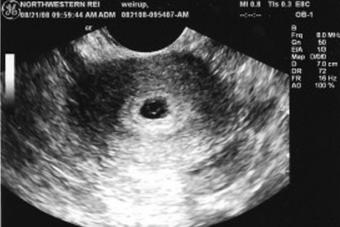Aspartate aminotransferase (AST, ASAT, AST) is an enzyme necessary for the synthesis of amino acids, metabolism of nutrients and the structure of cells and tissues. It is produced intracellularly and is located mostly in the myocardium (heart muscle), less in the liver, nervous tissue, kidneys, and muscles of the body.
In a healthy person, almost all AST enzymes are found in tissues; their amount in the blood is minimal. An increase in AST in a biochemical blood test indicates a disease associated with cell destruction. Moreover, the fact that AST does not exhibit its activity in all organs gives grounds, upon receiving an analysis result that is different from the norm, to immediately assume a narrow range of conditions that can cause this. So, AST in a blood test: what is it, the norm and what conclusions can be drawn based on the result, we’ll talk today.
What is AST in a blood test?
When testing blood for AST, the sample is taken from a vein. An increased AST value may be a symptom of serious diseases, but at the same time, an analysis for this enzyme must be done during treatment to assess the results achieved.
The AST indicator in a biochemical blood test is necessary when assessing the following conditions:
- Myocardial infarction;
- Formation of metastases in tissues;
- Oncology;
- Hepatitis;
- Autoimmune diseases;
- Mononucleosis;
- Steatosis;
- Cirrhosis of the liver.
When is an AST test prescribed?
It can be assumed that aspartate aminotransferase is abnormal in men
and women who complain of the following symptoms:
- Nausea (up to vomiting);
- Painful feeling of weakness;
- Discomfort and abdominal pain;
- Yellowing of the skin, whites of the eyes;
- Bloating;
- Sharp pain in the heart area, radiating to the left half of the body;
- Regular appearance of dark urine;
- Lightening the stool.
Norm of AST in the blood
The average AST activity in women is slightly lower than in men. This explains the lower value of the AST norm in women in the blood. There is also a dependence of the AST norm on age in children under 16 years of age. This is due to the restructuring and formation of all organs. After birth, AST changes significantly literally from day to day and week to week. The rate of analysis also depends on the specific laboratory and equipment used.
The accepted optimal AST values are as follows:
From birth: 25-70 units/l;
up to one year: no more than 58 units/l;
1-4 years: no more than 59 units/l;
5-7 years: no more than 48 units/l;
8-13 years: no more than 44 units/l;
13-16 years: no more than 39 units/l;
- Men
The AST rate in men's blood should not exceed 41 units per liter;
- Women
For most blood tests, a normal AST reading in women is no more than 31 units per liter. Moreover, during pregnancy, the rate of AST in women in the blood decreases by another 10%, but a false increase may also occur as a result of the release of AST into the blood from red blood cells.
Abnormalities in the ASAT blood test
In addition to diseases, an increase in analysis can be caused by the patient’s lack of preparation for donating blood. If you want to get a reliable result, consider these rules:
- The day before going to the laboratory, refrain from excessive physical activity;
- Avoid alcohol at least a week before going to a medical facility;
- Taking extraneous medications, especially antibiotics, large amounts of vitamin A, valerian and echinacea in various forms, is undesirable. If it is not possible to exclude these drugs, you should inform your healthcare professional.
- At least half an hour before donating blood for analysis, refrain from smoking.
- The analysis is taken in the morning, on an empty stomach, that is, it is recommended to wait 8-12 hours from the moment of the last meal.
- In the morning before donating blood, try to limit yourself from psycho-emotional stress and muscle strain.
But it also happens that all the rules and precautions were followed, and the AST blood test was elevated. Do not rush to attribute a whole range of diseases to yourself, because deviations in the results can also occur in an absolutely healthy person. For example, distortion of AST can be provoked by:
- Burns;
- Injuries;
- Lead poisoning;
- Mushroom poisoning;
- Allergies (including to medications);
- Pregnancy;
- Intramuscular injections.
ALT blood test: what is it?
ALT is also an enzyme that has the same functions and importance in human life as AST. For most people who want to understand their blood test results, it becomes unclear what AST is in the blood, what is its difference from ALT?
The fact is that AST or aspartate aminotransferase catalyzes the movement and reaction of an amino acid such as aspartate, and ALT promotes the movement of another amino acid - alanine. So these terms, which at first glance frighten a person not involved in medicine, take on a completely understandable meaning: the first part of the word is responsible for the amino acid, the second denotes a direct function - transfer (transfer) of functional groups and molecules.
The ratio of ALT and AST has a very important diagnostic value and is called the Ritis coefficient, which was given to it in honor of the scientist thanks to whom it has found wide use in the medical community.
Ritis coefficient (AST/ALT)
If ALT or AST deviate from the normal value, the Ritis coefficient begins to have diagnostic significance; in a healthy person, its calculation is not necessary.
The essence of the analysis is simple: ALT is mostly located in the liver and rises in the blood when it is destroyed. AST is located, as mentioned above, in the heart muscle, so its sharp increase can indicate heart disease.
Despite the fact that ALT and AST are not located in the same organ, but in a group of tissues, their organ specificity allows analysis to be carried out, taking into account the predominant location.
Thus, during myocardial infarction, AST increases sharply, deviating from the optimal value by 800-1000%, while ALT increases only by 150-200%. Hepatitis affects the blood in a completely different way: ALT increases up to a 20-fold increase in the norm, and AST can increase only 2-4 times.
Healthy people have a Ritis coefficient of 0.9-1.8. If the coefficient is two or more, further examination of the heart muscle is necessary. If the AST/ALT ratio becomes less than 1, the doctor may suspect liver cell destruction as a result of hepatitis or cirrhosis.
Aspartate aminotransferase is low, what does this mean?
The amount of AST enzymes in the blood cannot be too low, since the norm is also considered to be a situation where AST is not observed in the blood plasma at all. As you can see from the AST reference values above, only the maximum value is adjusted.
An AST reading that is too low may alert your doctor to a deficiency of vitamin B6, which is also involved in enzyme reactions, or to extensive liver damage.
AST carries important information about the patient’s health and the condition of his tissues, but in order to prevent misinterpretation of the results, it is necessary not to make assumptions on your own, but to consult a doctor.
If you still have questions about what AST is in a biochemical blood test or want to express your opinion on the topic of discussion, leave comments below. Share useful information with your friends and loved ones.
This article discusses specific enzymes in the human body, the first is alanine aminotransferase, and the second is aspartate aminotransferase. They are abbreviated as ALT and AST. These important enzymes are localized in the cells of our organs and inevitably penetrate into the blood - this happens in the presence of pathology. It is believed that elevated levels of these substances in the blood indicate the presence of diseases. The most commonly diagnosed are heart attack, hepatitis and pancreatitis. Internet users are often interested in what the norm of AST and ALT in the blood of women in mmol is, and to understand the topic, you need to read this article.
Enzymes in the blood
What is alanine aminotransferase?
The abbreviation ALT means an enzyme found primarily in the cells of the following parts of the body: liver, muscles, kidneys, heart, pancreas.
What is aspartate aminotransferase?
The name AST characterizes another enzyme, also concentrated in the cells of the human body, namely the following areas: heart, liver, muscles, nervous tissue. In other organs the substance is found in lower concentrations: pancreas, lungs, kidneys.
Indications for donating blood
In the traditional medical field, specialists often work with test results that reflect the concentrations of ALT and AST, as well as other important enzymes. Indications for donating venous or capillary blood are the following deviations and circumstances:
- the presence of a genetic predisposition to liver pathologies;
- assessment of the effectiveness of therapeutic measures used in the treatment of certain diseases;
- alcohol abuse;
- taking medications that can cause unwanted side effects, such as harm to the liver;
- excess weight problem;
- diabetes mellitus;
- condition after hepatitis or with an ambiguous diagnosis of hepatitis;
- characteristic symptoms of liver dysfunction, such as lack of appetite, nausea and vomiting, causeless bloating, pain impulses in the epigastric region, abnormal stool color, itching, the appearance of a yellow tint on the whites of the eyes and skin.
Preparing for a blood test
To obtain correct results during the study, the patient must behave appropriately, namely, implement the following rules:
- quit smoking for at least half an hour before blood sampling;
- complete fasting for 12 hours before blood sampling;
- staying in a state of rest, that is, eliminating emotional overload and physical stress for half an hour before the procedure.
Norms of AST and ALT enzymes
Many unenlightened people are interested in the norm of AST and ALT in the blood of women in mmol, it is indicated in this article. Depending on the method of blood testing, different designations may appear in the doctor’s conclusion. So, the following frameworks are known:
- AST - aspartate aminotransferase is normally present in the blood at a concentration of 10-30 IU/l or when converted to SI units - 28-125 mmol/l (according to other sources - 32 U/l);
- ALT - alanine aminotransferase is present in the blood in a normal volume if the test results fall into the range of 7-40 IU/l or when converted to SI units - 28-190 mmol/l (according to other data 33 U/l).
Increased activity of ALT and AST enzymes in the blood
Why is the ALT enzyme elevated in the blood?
Considering the fact that in a healthy body alanine aminotransferase is characterized by low activity, with a tenfold increase in the level of this enzyme, a specialist suspects acute hepatitis. Against the background of chronic hepatitis, a fourfold increase in the enzyme rate is observed.
In addition, an increase in ALT in the blood is observed with these abnormalities:
- use of drugs or other hazardous substances that are toxic to the liver;
- progression of pathology that provokes a lack of blood supply to the liver (ischemia disease);
- most liver diseases imply a predominance of ALT activity over AST and a low ratio of these indicators; however, there are exceptions, such as the destruction of muscle tissue, cirrhosis and alcoholic hepatitis;
- obstruction of the biliary system;
- development of cirrhosis due to blockage of the bile ducts or chronic hepatitis;
- a moderate increase in ALT is observed in liver tumors;
- ALT activity in the human body increases under the influence of physical activity and intramuscular injections;
- consumption of dietary supplements and abuse of fast food;
- a slight increase in ALT can occur with late toxicosis of pregnancy;
- in a person with a myocardial rupture, the amount of the ALT enzyme in the blood increases fivefold, while the figure is significantly inferior to the increase in AST (with liver pathologies the situation is the opposite).
Why is the AST enzyme elevated in the blood?
In healthy people, the activity of the AST enzyme is low. If the indicator is ten times higher than the norm, then viral infections are often diagnosed. This also happens when taking medications and substances toxic to the liver or with pathologies that complicate the blood supply to the liver (ischemia disease). The disease chronic hepatitis causes a fourfold increase in enzyme activity.
The following factors can provoke an increase in AST in the blood:
- the indicator increases moderately with certain types of liver cancer, dangerous obstruction of the ducts within the biliary system, cirrhosis;
- after a heart attack and from muscle tissue damage;
- taking dietary supplements, injections into muscles and physical activity; ,
- the indicator increases twentyfold if the heart muscle is damaged, that is, myocardial infarction has occurred;
- acute hepatitis and other liver pathologies;
- There is a moderate increase in AST against the background of obstructive jaundice and in the presence of cirrhosis or liver metastases.
Of course, it doesn’t hurt to know what the norm of AST and ALT in women’s blood is in mmol, but it’s still better to entrust the interpretation of the tests to the treating specialist.
Alanine aminotransferase, or ALT, and aspartate aminotransferase, or AST, are enzymes found in body cells that are involved in amino acid metabolism. They are located only in the cells of organ tissues, and enter the bloodstream only when the cell disintegrates due to traumatic injuries or pathologies.
Types of diseases
Excessive ALT content indicates the development of pathology of the organ in the cells of which its largest amount exists. The causes of increased alanine aminotransferase are liver pathologies. A feeling of discomfort and pain in the right hypochondrium, diarrhea, icteric discoloration of the skin and mucous membranes, flatulence, and bitter belching are signs of an increase in ALT. When conducting a blood test, increased ALT and AST are accompanied by an increase in bilirubin levels when hepatitis develops. More often, an increase in ALT levels indicates the occurrence of other diseases. The concentration of ALT has a direct relationship with the severity of the pathology.
The necrotic process in the heart muscle causes the release of these enzymes into the blood. Their increased content in the serum also indicates the development of other cardiopathologies: failure, inflammation of the heart muscle. Additionally, the reasons for the increase in serum ALT concentration may be existing injuries in the body, which are associated with damage to muscle tissue, and pancreatitis.
If the ALT and AST blood test (interpretation) showed less than twice the normal values, it is necessary to organize observation and a 2-fold examination. This tactic is optimal for patients.
Blood test ALT and AST - interpretation for some diseases
A slight increase in transferases is indicative of fatty liver damage of the non-alcoholic type, including “fatty liver”, non-alcoholic steatohepatosis, and chronic viral hepatitis.
A moderate increase may exist in viral or alcoholic liver inflammation and various chronic liver diseases with or without cirrhotic damage.
Elevated levels are typical of severe acute hepatitis, toxic or drug necrosis, shock or hepatic ischemia.
Excessively high levels (more than 2000-3000 U/l) exist with an overdose of acetaminophen and when using the drug in alcohol-dependent patients, with shock and/or hepatic ischemia.

It should be noted that since ALT is found in red blood cells, it is necessary to prevent their breakdown when preparing serum for analysis. ALT may decrease when serum is stored for several days.
The role of medicines, herbs and other substances
A thorough history and interpretation of laboratory results are important to identify drug-induced increases in transferases. Similar liver damage is detected in 1-2% of cases of chronic liver inflammation. They are associated with the use of antibiotics, antiepileptic drugs, hydroxymethylglutaryl-CoA reductase inhibitors, non-steroidal anti-inflammatory drugs and medications for the treatment of tuberculosis.
The easiest way to determine the dependence of an increase in aminotransferases with some drug is to cancel it and observe the level of enzymes. Without discontinuing the drug, this dependence cannot be determined.
Before prescribing treatment for any disease, it is first necessary to conduct a complete examination of the body in order to make the correct diagnosis. A general and biochemical blood test, which includes examinations for ALT and AST, will help you do this. Currently, medicine has such an indicator as the norm of ALT and AST in the blood. If it is elevated, it means that the person has a certain disease. But before you look for the reasons why the levels of ALT and AST, or one of the two indicators, are elevated, and also look for methods of treatment, you need to find out in more detail what it is.
Many cells of living organisms contain aminotransferases, which used to be called transaminases. They can be found both in the simplest unicellular organisms and in multicellular ones. Each such aminotransferase has functions unique to it that cells are able to tolerate (this also applies to amino acids, which each has its own). There are the following groups of aminotransferases:
- Aspartate aminotransferase (AST, AST) is a certain enzyme capable of transferring aspartate amino acids from biomolecules.
- Alanine aminotransferase (ALT, AlAT) is an enzyme that transfers the amino acid alanine into biomolecules.
The maximum activity of ALT and AST is observed in the human body in the kidneys, muscle tissue, heart and liver. The highest activity of ALT can be noted in the pancreas. Important: since each group of aminotransferases is located in a specific organ, if it is damaged, it easily enters the bloodstream. Thanks to this property of the enzyme AlAT and AST, it is possible to determine the presence of diseases that occur latently in the body. If, after taking blood in a biochemical analysis, ALT and AST are increased, this means that the patient suffers from hepatitis, pancreatitis, myocardial infarction, or some kind of injury has occurred in the body.
What does increased performance mean?
Since the level of AST and ALT in each internal organ differs, elevated levels indicate its disease.
The main part of the ALT enzyme is found in the liver, heart muscle, kidneys and pancreas. With pathologies of these organs, ALT enters the blood, which causes a strong increase in this enzyme during analysis.
Most of the AST enzyme is found in the myocardium, nerve and muscle tissues, and liver. Damage to any of the above organs will cause the level of AST in the blood to increase.
The level of ALT and AST in the blood directly depends on the functioning of the liver, which is responsible for the following functions:
- Protein synthesis in the body;
- Removal of toxic substances and poison in case of poisoning;
- Creation of biochemical substances;
- Storage of glycogen, which is responsible for the vital functions and normal functioning of the body;
- Regulation of biochemical reactions.
What indicators are considered normal for AST and ALT?
A biochemical blood test helps to identify dangerous diseases that occur latently in the body at an “early stage.” Often, an increase in ALT means and indicates a dysfunction of the liver, while an increased AST rate reflects a malfunction of the heart. But which indicators are considered normal and which are abnormal, so that it can be argued that high or low levels of ALT and AST are a sign of a dangerous progressive disease.
Normal and acceptable levels of ALT and AST depend on gender, so they will vary significantly between men, women and children.
- In adult women, ALT and AST levels should be less than 31 U/L.
- In adult men, the AST norm in the blood should be less than 47 U/L, and the ALT norm should not be higher than 45 U/L.
- As children constantly grow, their ALT and AST levels change. In this case, the ALT level in children should be below 50 U/l, while the AST level in children in the first 5 days of life reaches 140 U/l. After 5 days and until the age of nine, the AST level in children should be below 55 U/l.
For the convenience of determining the level of ALT and AST, a table has been developed that reflects all indicators depending on the patient’s gender:
ALT and AST levels in children, men and women

Since the level of AST and ALT may vary depending on the modernity of the equipment used to perform the biochemical analysis, a table was developed that reflects the normal values and degrees of deviation of enzymes present in the blood:

If the AST and ALT values in the biochemical analysis are greatly increased, the patient can be diagnosed with liver pathologies. This phenomenon is often observed with hidden hepatitis and other dangerous diseases.
If a biochemical analysis showed that the AST level is increased several times, this means the presence of a myocardial infarction in the body. If AST was initially elevated and then decreased 4 days later, it means there was no heart attack.
Reasons for changes in indicator levels
After deciphering the biochemistry analysis, it was noticed that certain diseases affect the decrease in ALT, but this has nothing to do with liver functionality. A decrease in ALT can be caused by genitourinary infections, alcoholic hepatitis, tumor neoplasms, frequent alcohol consumption, and lack of vitamin B6 due to poor diet.
The main reasons why analysis rates in men, children and women are increased are:
- Myocardial infarction;
- Hepatitis;
- Forms of pancreatitis;
- Liver pathologies caused by drugs, alcohol or a viral infection;
- Taking steroids;
- The body's reaction to medications;
- Metastases in the liver;
- Fatty hepatosis;
- Burns and injuries where damage to muscles and muscle tissue occurs.
It is worth knowing that a decrease in the level of these enzymes occurs independently, after the underlying disease is cured.
The first symptoms indicating an increase in AST and ALT:
- Nervousness and depression;
- Poor sleep;
- Decreased appetite, which causes weight loss;
- General weakness of the body.
Late symptoms that enzyme levels are elevated include:
- Changed color of urine, which becomes darker;
- Discolored stool;
- The whites of the eyes and skin become yellowish;
- Nausea and feeling unwell;
- Swelling of the limbs.
Additional diagnostic measures to determine the presence of hidden diseases:
- Blood test for hepatitis B and C;
- Ultrasound of the abdominal organs;
- Clinical blood test;
- Liver biopsy;
- Donating blood for thyroid hormones.
Treatment
If the level of AST and ALT in children, men and women is elevated, it means there is some disease in the body. To lower the levels of these enzymes, you first need to get rid of the source of the disease, which caused their increase.
First of all, you need to properly organize your diet, which should be of high quality and healthy:
- You need to eat plenty of fresh fruits and vegetables because these foods contain fiber. This also includes brown rice, which has the same properties.
- Green and medicinal teas containing burdock, dandelion or milk thistle will help cleanse the liver and restore the body's water balance.
- It is important to consume foods containing large amounts of vitamin C. For example, Revit vitamins contain a whole range of useful substances.
- The drinking regime should be observed.
- It is necessary to take a cool shower.
- Breathing exercises, as well as morning exercises or sports - all this helps to defeat the disease, and therefore reduce the level of AST and ALT in the blood.
Since ALT levels are often elevated in liver pathologies, the doctor must also prescribe medications that will help protect hepatocytes from the effects of other harmful factors. These drugs are collectively called hematoprotectors.
The doctor will also note that the liver during illness in children, men and women is greatly weakened, which means it cannot be exposed to unnecessary risk, as the organ will be damaged even more.
Alanine aminotransferase (ALT) and aspartate aminotransferase (AST) are enzymes that are active participants in amino acid metabolism. They can be found in the cells of the kidneys, liver, heart muscles and other organs.
If they enter the blood, this indicates the presence of some kind of organ dysfunction due to cell destruction.
When ALT levels are elevated, this most often indicates the development of a certain diseases affecting the liver. A decoding of a blood test can show in more detail which organ is damaged; the level of ALT or AST will be significantly increased in it.
What is ALT in a blood test?
Why is ALT elevated in a blood test, and what does it mean? Alanine aminotransferase (ALT) is an endogenous enzyme belonging to the group of transferases, a subgroup of transaminases, or aminotransferases. Determining its level in the blood is widely used in medical practice to identify pathologies of the liver and some other organs. A blood test for ALT is almost always carried out in conjunction with determining the AST level.
An assessment of these two laboratory parameters allows the doctor to suggest the localization of the pathological process and determine the likely severity of the disease. For rate the Ritis coefficient is applied (AST/ALT ratio), which is normally 1.33. In acute viral hepatitis, this coefficient decreases, while in myocardial infarction and alcoholic liver damage it increases.
Where is ALT found:
- Liver (most of all);
- Kidneys;
- Lungs;
- Pancreas;
- Muscles;
- Heart.
The main function of alanine aminotransferase is associated with the metabolism of amino acids. This substance acts as a catalyst in the transfer of certain molecules. When energy metabolism is disrupted, the permeability of cell membranes increases, which leads to cell destruction and the release of the enzyme into the blood serum.
Norm
The norms within which alanine aminotransferase in the blood must fit are as follows:
- children under 1 year: 13 – 45 U/l;
- men up to 1 – 60 years old: 10 – 40 U/l;
- women 1 – 60 years old: 7 – 35 U/l.
When analyzing this enzyme, high accuracy is required, and it is directly related to the use of certain drugs that can distort the analytical picture. Therefore, before checking your ALT level, you should consult with your doctor, who will either temporarily stop taking medications or take into account deviations in test results associated with drug therapy.
Increased ALT in the blood: causes
In simple terms, alanine aminotransferase is an enzyme that, in addition to the liver, where its concentration is especially high, is found in literally all parenchymal organs, occupying mainly the cytoplasm of tissue cells. It is not for nothing that ALT is considered a kind of marker of liver pathology and is regarded as a reliable sign of damage to its parenchyma, because the activity of the enzyme in the blood plasma is directly dependent on the degree of involvement of the tissue of this important organ in the pathological process.
Given this high sensitivity of ALT, it can be expected that alanine aminotransferase will be elevated in cases of the slightest damage to the hepatic parenchyma.
So, increasing ALT levels occurs in the following cases:
- . This inflammatory liver disease can come in several forms. For chronic or viral hepatitis, the excess level of alanine aminotransferase in the blood is insignificant.
- Rarely, an increase in ALT can be observed in cases of obstructive jaundice, but high values of this indicator are extremely rare.
- . This disease is dangerous because it may not have pronounced symptoms for a long time. Patients quickly get tired and feel tired.
- Liver cancer. This malignant tumor often forms in patients with hepatitis. ALT analysis in this case is necessary both for diagnosing the disease and for making operational decisions.
- Non-alcoholic fatty liver disease (steatosis): ALT levels increase slightly – 2-3 times. When the disease transitions to the steatohepatitis phase, there is a marked increase in ALT, high levels of total and direct bilirubin, as well as indicators of inflammatory blood activity.
- . The presence of this disease is also indicated by the level of ALT. Its increased amount indicates an exacerbation of pancreatitis.
- Myocarditis. It manifests itself in lesions of the heart muscle. Its main symptoms are shortness of breath, rapid fatigue of the patient and increased ALT levels in the blood.
- . This disease is a consequence of impaired blood flow, resulting in necrosis of cardiac muscle tissue.
- Tests may show an increase in ALT levels during alcoholism and immediately after drinking alcoholic beverages.
When the ALT level increases by 5 times, a myocardial infarction can be assumed; if it reaches 10-15 times, we can talk about a deterioration in the patient’s condition after the attack. The value of the de Ritis coefficient also changes upward.
Acute hepatitis provokes an increase in the enzyme content in the blood by 20-50 times, muscular dystrophy and dermatomyasitis - by 8. Gangrene and acute pancreatitis are indicated by exceeding the upper limit of the indicator by 3-5 times.
Reasons for increased ALT not related to diseases
Other reasons can also increase the level of ALT in the blood, for example, some drugs, such as estrogens, oral contraceptives, cholestatics, steroids, iron salts, nicotinic acid, sulfonamides, methyldopa, azithromycin, aminoglycosides, cephalosporins, fluoroquinolones, clofibrate, clindamycin.
In some cases, the cause of increased alanine aminotransferase levels is physiological reasons:
Of course, mostly the enzyme level increases due to other health problems, but it is for the above reasons that the indicator can be increased, but only slightly.
What to do when ALT in the blood is elevated?
If the ALT blood test is elevated, then a more complete examination is necessary to identify the cause of this change. And the sooner this is done, the much more prosperous the outcome will be.
Most often, hepatoprotectors are prescribed to reduce ALT levels:
- Heptral;
- Essentiale N;
- Karsil;
- Tykveol.
These drugs have numerous effects. First of all, they protect liver cells from further damage, and also restore cells that are already damaged but not yet dead.






